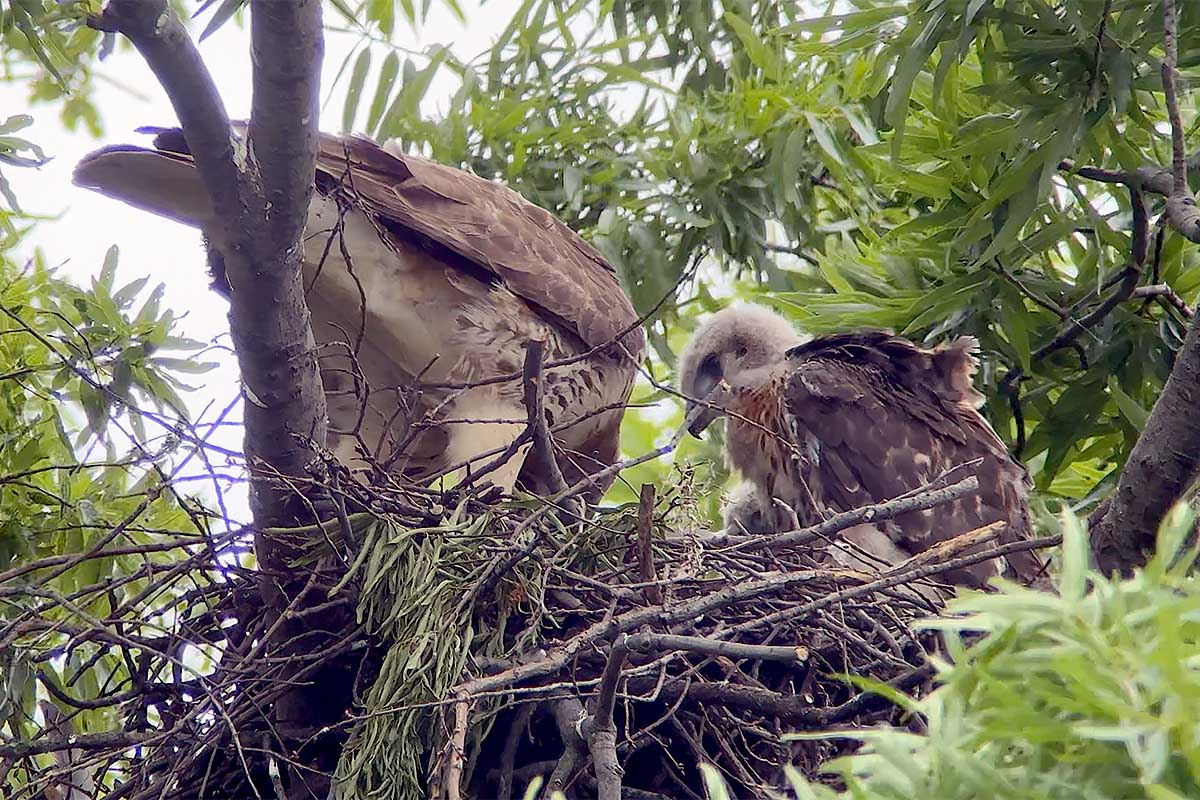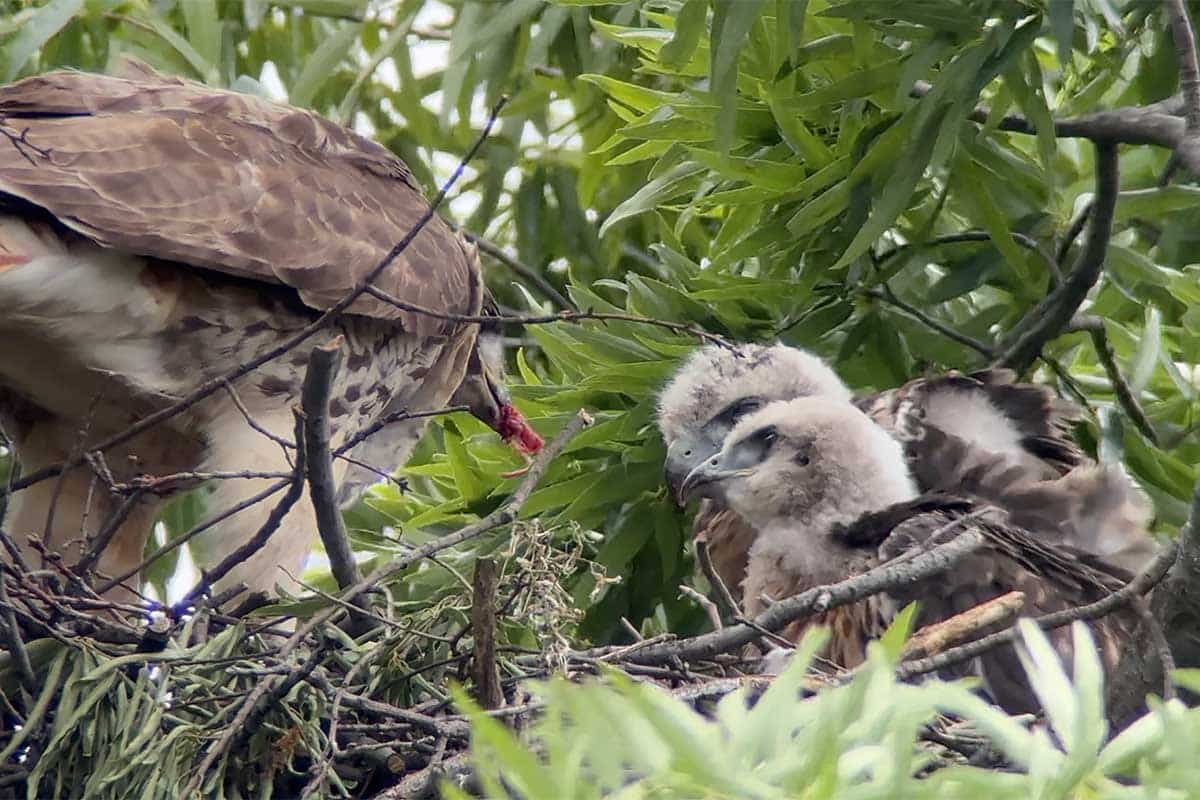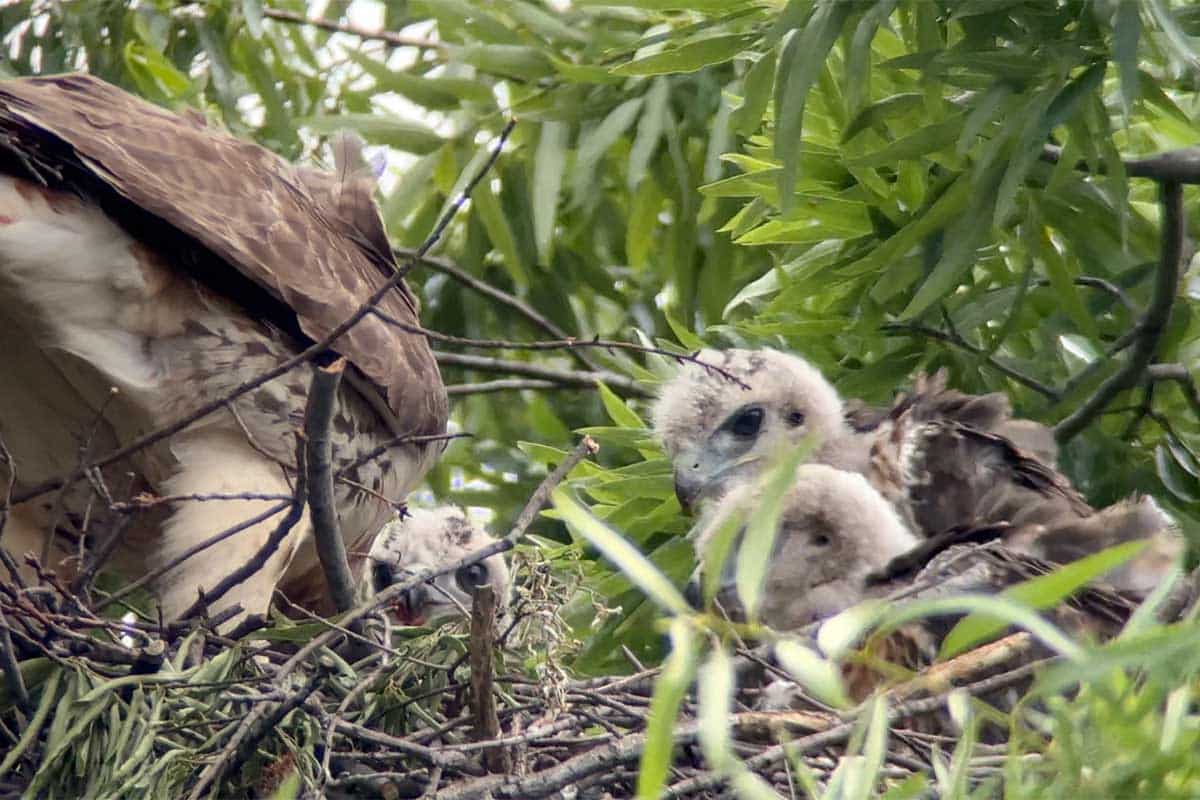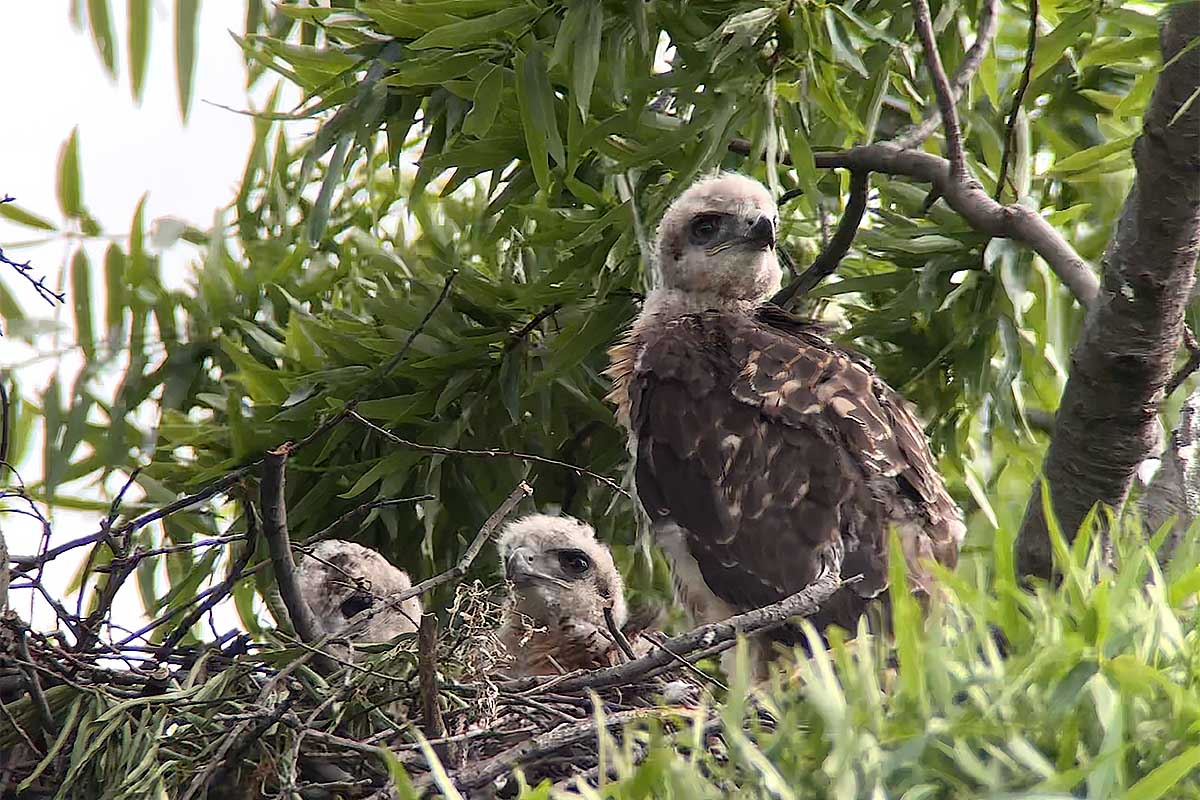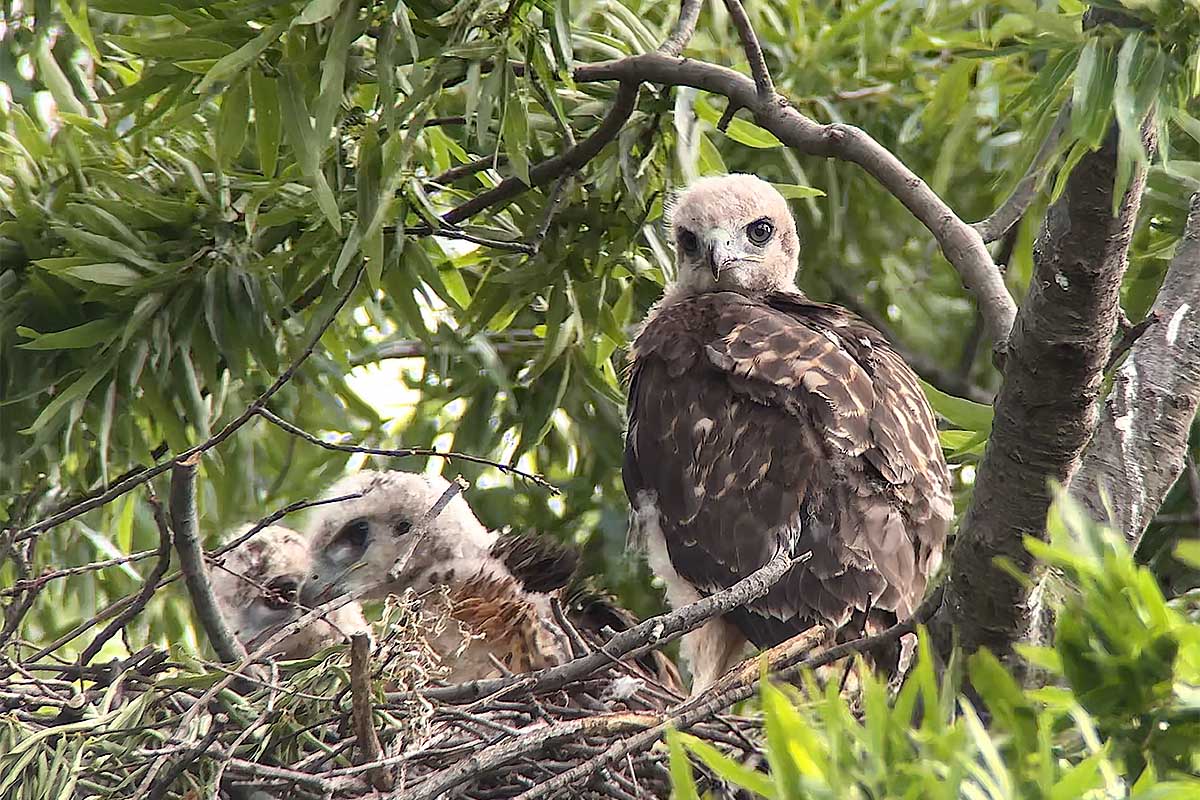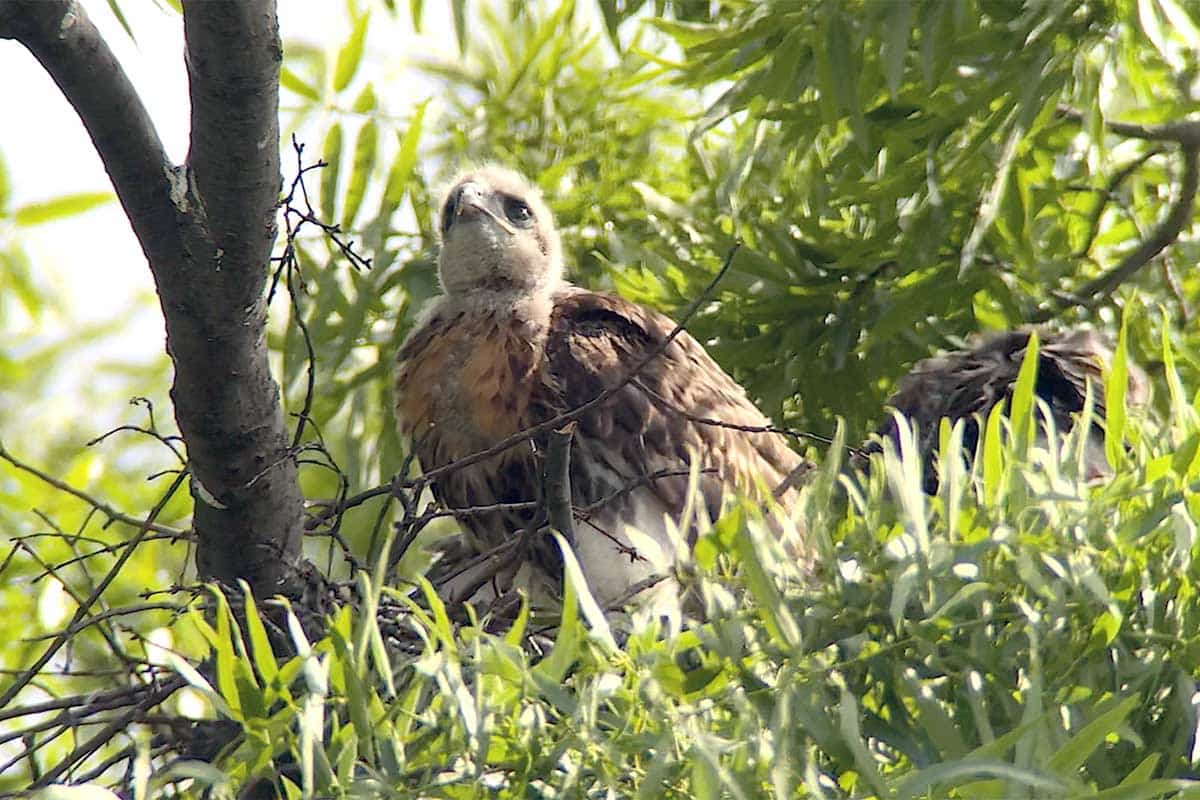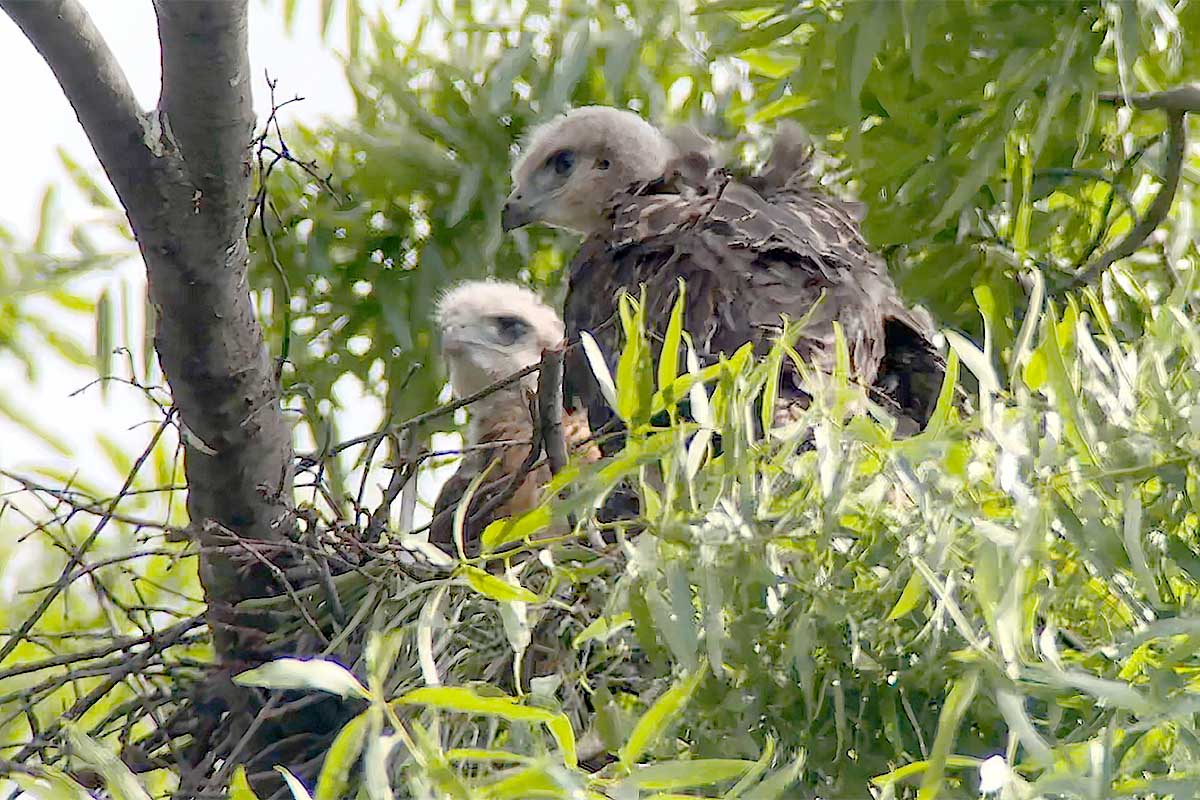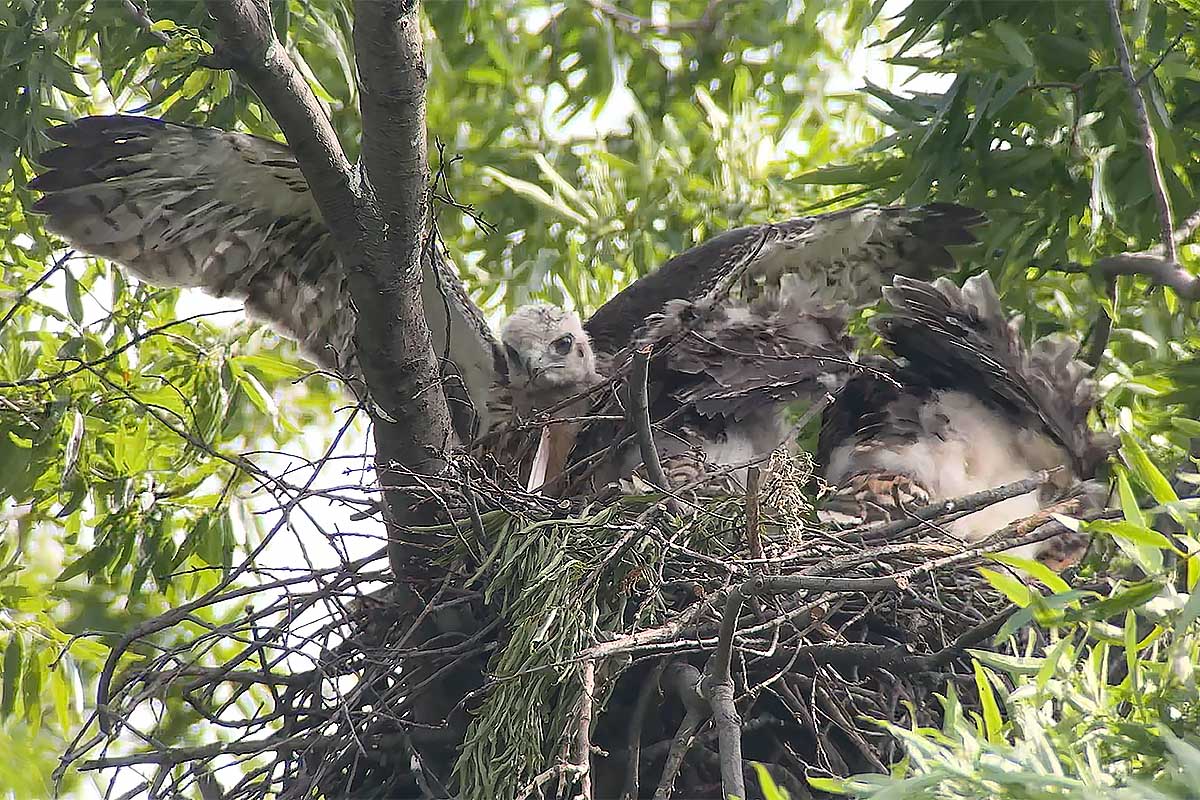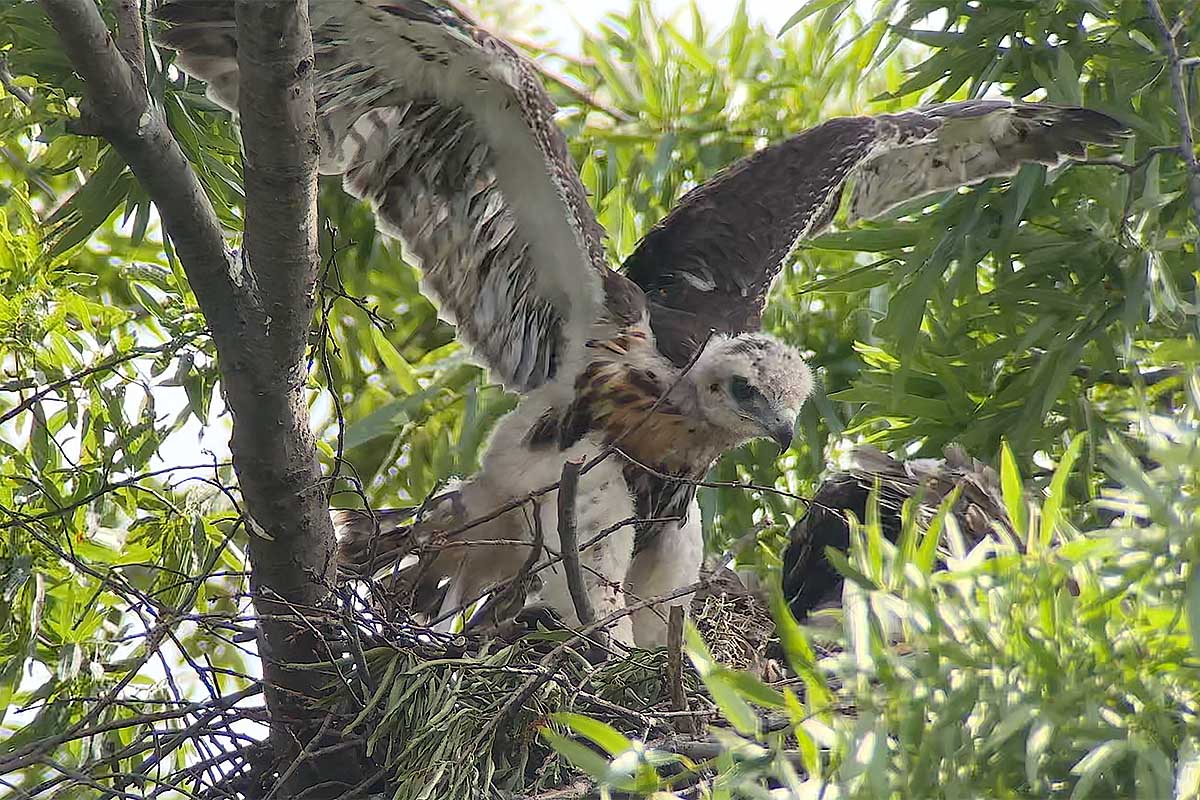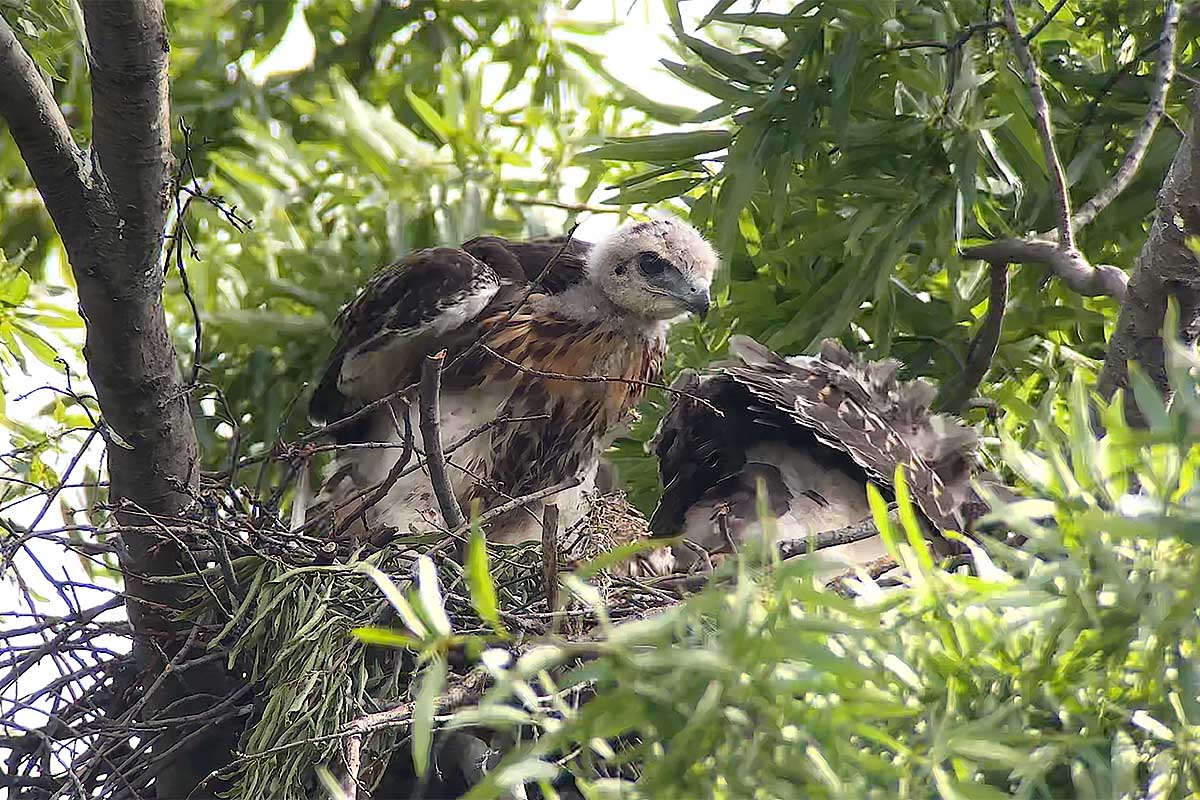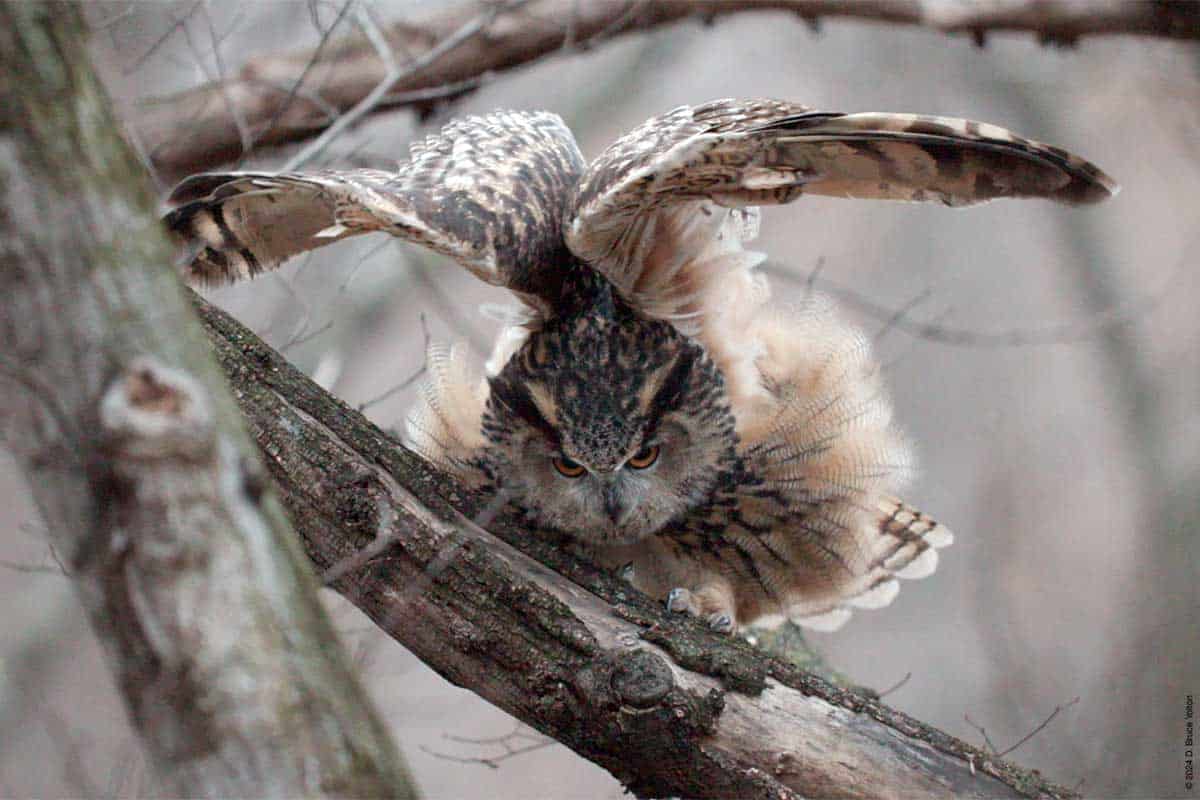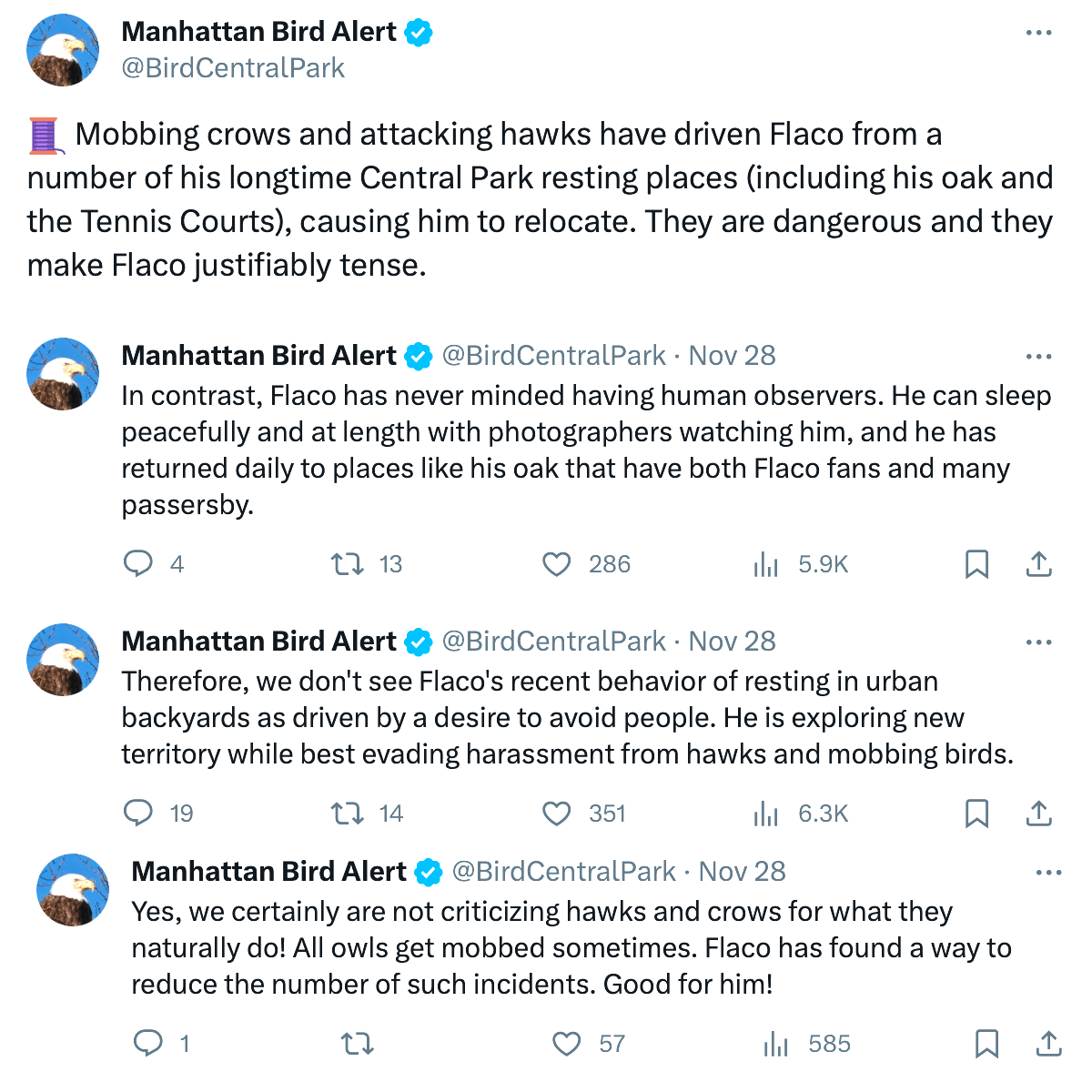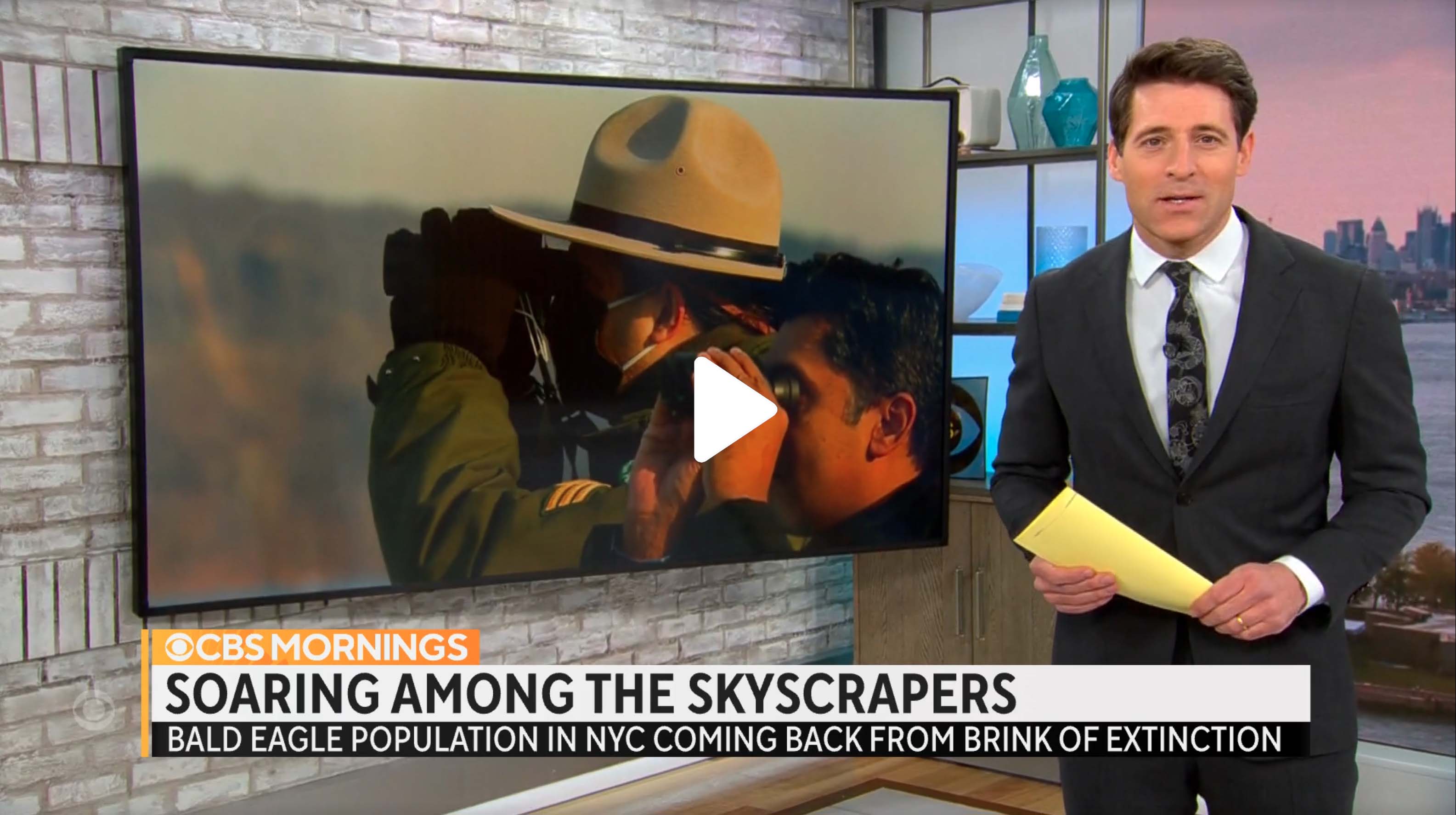Tompkins Square Park
I haven’t had a chance to get down to Tompkins Square Park recently. I was last there just after Christo disappeared and the new male appeared.
The new nest location is very hard to see! There are a number of small windows that let you see the birds if the winds are right. I arrived just before both parents went to the nest, and the mother fed the three youngsters. It’s so nice to see yet another successful nest in the park.
